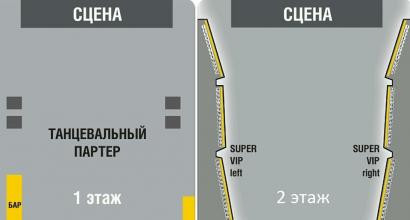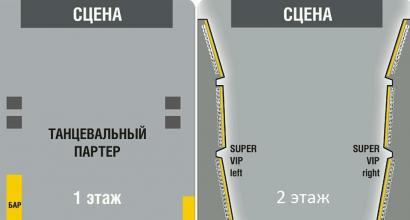Presentation on the theme "The Eternal City and its inhabitants". The eternal city rome and its inhabitants the eternal city and its inhabitants presentation
The city of Rome celebrates its 2766th anniversary this year. The history of the city is its monuments, striking in their grandeur and scope at all times. It is no coincidence that the city of Rome is called the Eternal. In today's lesson, we will take an unusual tour of the ancient city, plunge into the atmosphere of imperial Rome.
Background
In II A.D. The Roman Empire was at its peak (see lesson). The center of a huge empire was the city of Rome. From it, 372 stone-paved roads led to all ends of the empire (province), every thousand steps appeared tablets indicating the distance to Rome. Rome and its major buildings, such as the Pantheon, were designed to embody the idea of \u200b\u200bthe power and greatness of the empire.
Events
The main structures in ancient Rome
During this period, more than a million people lived in Rome. Thousands of residents from Italy and the provinces sought to get to Rome every day. Some came for commercial affairs, others wanted to get a lucrative position in the service of the emperor. Someone came to see the gladiatorial games in the Colosseum (Flavian Amphitheater), which could hold about 50 thousand people, or the chariot race in the Circus Maximus.
The main attraction of Rome was the Pantheon (temple of all gods). The pantheon is crowned with a dome that looks like half a ball. The temple is built of bricks and concrete, lined with marble inside (Fig. 1).
The central square of Rome was the Forum (Fig. 2). Here was the temple of Saturn, the temple of the keeper of the hearth of Vesta, the column of Milliarius (from which the distance was measured not only in Rome, but also outside of it), the buildings of the curiae were located, in which the Senate sat and the proceedings were held.

Figure: 2. Roman Forum ()
Each emperor strove to build his own forum. This is how the Forum of Caesar, Forum of Augustus, Forum of Trajan and others appeared in Rome.
The Romans loved to visit the theater. The first permanent stone theater was built around 55 BC. e. commander Gnei Pompey the Great. The Theater of Marcellus was built in 12 BC. e. and accommodated 11 thousand spectators. The actors used masks and colorful clothes so that the audience understood who was in front of them - an old man or a young maiden. All roles in the Roman theater were played by men. The theatrical craft was considered an unworthy occupation.
Baths - terms were one of the most visited public institutions in Rome (Fig. 3). There were over a thousand public baths in Rome. The largest and most luxuriously decorated baths were built at the behest of Emperor Trajan. Here the Romans came to relax and enjoy a pleasant conversation; sports grounds, swimming pools and libraries were also located here.

Figure: 3. Roman Baths ()
Rome was the largest city of the empire, it was called the eternal, golden, or simply the City.
Bibliography
- A.A. Vigasin, G.I. Goder, I.S. Sventsitskaya. History Of the ancient world... Grade 5. - M .: Education, 2006.
- A.I. Nemirovsky A book to read on the history of the ancient world. - M .: Education, 1991.
- Ancient Rome. Book for reading / Ed. D.P. Callistova, S.L. Utchenko. - M .: Uchpedgiz, 1953.
- Slovari.yandex.ru ().
- Dic.academic.ru ().
- Theater.helllab.ru ().
Homework
- What were the most popular public places among the Romans?
- What kind of public shows were staged at the Circus Maximus?
- What public institutions were located at the Forum?
- Why did the Romans visit the baths?
CHOOSE THE CORRECT ANSWER.
In the 2nd century. in Rome transferred
farmers
For Rent
To vacant lands
In the province
Trajan condemned
Criminals
Scammers
bribe-takers
Trojan conquered
Dacia
Parthia
Syria
The Romans invented
Cement
Concrete
Whitewash.
THE "ETERNAL CITY" AND ITS RESIDENTS
LESSON PLAN.
1.RIM- "HEART" OF THE EMPIRE.2. CITY BUILDINGS.
3. PUBLIC BATH.
4. "BREAD AND SPECIES".
LESSON ASSIGNMENT
? They tried to move to Romeinhabitants from all Roman provinces.
What do you think attracted them to
"The eternal City" ?
1.RIM- "HEART" OF THE EMPIRE.
In Rome, there were a huge number of buildings designed to emphasize the power of the empire.On many forums of the city
were installed
triumphal arches in
honor of victories over enemies
Triumphal Arch
1.RIM- "HEART" OF THE EMPIRE.
For glorificationemperors on many
Forums were built
columns.
On the column itself
were placed
bas-reliefs with scenes
life of emperors, and
crowned the columns
multi-meter statues
emperors.
1.RIM- "HEART" OF THE EMPIRE.
Coliseumin Rome.
The building of the Colosseum has become the symbol of the city, intended for organizing shows and performances.
It accommodated about 50 thousand spectators.
The Pantheon is the temple of all the gods.
Dome bricksheld together with cement
pumice
D-8.5 m.
Niches.
Lightened the dome.
Natural
Lighting.
Height
dome-43 m.
Walls
lined
marble.
Domus - home of a wealthy Roman
Atrium-heatedguest room.
Leased
premises
Sloping
roof Atria.
Residential
rooms.
Cabinet.
Dining room tricline.
Insula city buildings.
Roomsthe poor.
Rooms of the rich.
Public
toilets.
Taverns.
Garbage and slops
thrown out
to the street
Rooms for
nobility.
2. CITY BUILDINGS.
In cold weather, the houses were heated. Romans warm air heated the floor and pipes on purpose.you have come up with a central heating system.
made within the walls of the building.
During construction on the ground floor
Heated
stone very
kept for a long time
warmly.
established
special
fireplaces.
3. PUBLIC BATH.
In the 3rd century, there were 1000 private and 11public baths. One of the most beautiful
the buildings of the city were considered the emperor's baths
Caracalla.
Thermes
Caracalla.
3. PUBLIC BATH.
At the entrance there were changing rooms withchambers for storing clothes.
3. PUBLIC BATH.
In one of the rooms withhigh temperature
a swimming pool was arranged. IN
this humid atmosphere
visitors steamed and
sweated.
Caldarium is a warm pool.
3. PUBLIC BATH.
In one of the hallswas big
pool with a cool
water to
visitors could
cool down after
visits to the steam room.
Frigidarium pool
with cool water.
4. "BREAD AND SPECIES".
Chariot Races.The rise of empire power
led to the fact that
poor people in Rome
wanted to work.
They demanded free distribution of bread and equipment from the state
mass spectacles.
The most favorite spectacle was the chariot race, which collected dozens of
thousands of viewers.
To use the preview of presentations, create yourself a Google account (account) and log into it: https://accounts.google.com
Slide captions:
MBOU "Kirzheman secondary school" Chamzinsky district of the Republic of Mordovia Presentation for the lesson history in grade 5 on the topic: "The Eternal City and its inhabitants" Teacher: Loginova V.I.
The three-span arch of Constantine, built in 315 and dedicated to the victory of Constantine. This is the only arch in Rome built in honor of the victory not over an external enemy, but in civil war... The arch is 21 m high, 25.7 m wide and 7.4 m deep. The main part of the monument is made of marble blocks.
Colosseum (from Lat. Colosseus - huge, colossal) The construction of the largest amphitheater in the entire ancient world, with a capacity of over 50 thousand people, was carried out for eight years as a collective construction of the emperors of the Flavian dynasty. It began to be built in 72 AD. e. For a long time, the Colosseum was for the inhabitants of Rome and visitors the main place for entertaining shows, such as gladiator fights, animal baiting, sea battles.
Pantheon - "temple of all gods" in Rome, a monument of centric-domed architecture of Ancient Rome. Built in 126 AD e.
domus (lat. domus) - a house-mansion of the same kind.
Innsula is a multi-storey residential building with rooms and apartments for rent. They appeared no earlier than the 3rd century BC. The upper floors were occupied mainly by the poor, while the wealthier strata of the population rented apartments on the first floors. Most of the apartments were unheated and poorly lit. With the exception of the first floor, some of them lacked water supply and sewerage.
Baths - antique baths; In Rome, the baths arose according to the Greek model and became centers of social life. Roman architects developed an efficient central heating system with floor and wall heating, in which water and air were heated by a stove, which were then circulated under the floor and in the wall cavities. At the same time, double covers were used so that the floor was not very hot. Inside, the walls of the baths were decorated with marble or plastered.
The Circus Maximus is the largest hippodrome. It was located in the valley between the hills. 12 chariots could take part in competitions at the hippodrome at the same time.
ru. wikipedia .org
On the subject: methodological developments, presentations and notes
The presentation allows students to colorfully tell the students about the Kulikovo battle and its historical significance for the Russian people ...
Presentation for a history lesson for grade 10. Contains data about ancient Russia, its first rulers, domestic and foreign policy of the state during the formation of the Russian state ...


